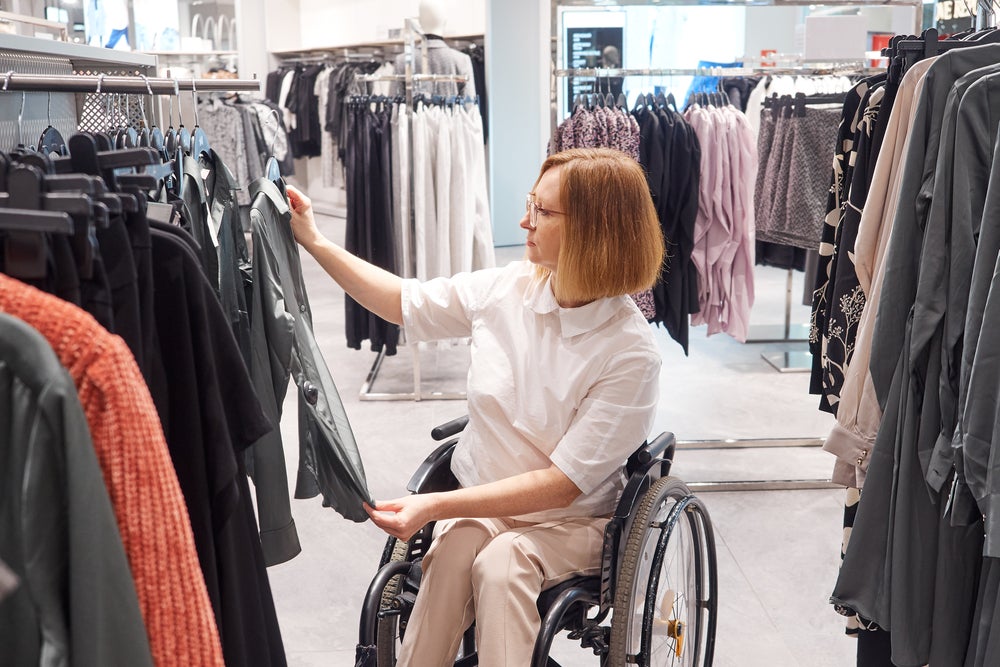
One in four US consumers have experienced at least one type of disability, indicating significant growth potential for the adaptive clothing market, according to the authors of a recent study published in the International Journal of Fashion Design, Technology and Education Journal.
Hannah Laurits and Sheng Lu from the Department of Fashion and Apparel Studies at the University of Delaware examined US fashion retailers’ assortment and pricing strategies for adaptive clothing and found five missed opportunities within this lucrative space.
1. Reassess adaptive clothing pricing
After examining the information on US retailers’ websites for adaptive clothing products for sale in the US from January 2018 to December 2022, the authors found a statistically higher price for adaptive clothing compared to non-adaptive equivalents.
Laurits and Lu noted “adaptive clothing’s higher production costs could be a critical contributing factor”.
For example, adaptive clothing often involves a more complex product development process such as talking with end users to determine the clothing’s most appropriate and essential functions, which could result in extra design time and labour costs.
Plus, designing adaptive clothing could require additional tests for technical quality, product reliability, and more time spent on modification compared to creating non-adaptive equivalents.
Adaptive clothing can also need specialised textile materials and accessories, such as flexible magnetic fasteners, which could increase production costs.
However, the authors pointed out there is a disconnect between the higher production costs and the fact consumers with disabilities “had more limited purchasing power and were more likely to struggle financially than those without disabilities within the US”.
The authors explained: “Considering the typically lower income and higher living expenses of people with disabilities (PWD), it is imperative for US retailers to actively seek solutions that make adaptive clothing more financially attainable for this demographic.”
2. Leverage US import duty-free tariffs
One solution offered within the study to combat this is to leverage the import duty-free tariffs available within the US for adaptive clothing.
“In US trade law, products qualified for the HS code 9817.00.96 (articles specially designed or adapted for the use or benefit of the blind or other physically or mentally handicapped persons) could enjoy. However, as adaptive clothing is often purposefully designed to “look similar” to regular clothing, it has been challenging for retailers to take advantage of the trade provision,” stated Laurits and Lu.
For this reason, the authors suggest more dialogues between retailers and policymakers could be warranted.
3. Make adaptive clothing more stylish
The authors found US retailers adopted what they described as “unique product assortment strategies for adaptive clothing” compared to non-adaptive ones.
For example, 70% of adaptive clothing featured “more boring patterns” compared to non-adaptive equivalents, which were available in a wide variety of design choices.
Laurits and Lu believe this made adaptive clothing look less stylish overall and reflected a focus on functionality over aesthetics.
4. Make the clothing in all categories
Plus, the adaptive clothing was only available in certain categories such as tops and bottoms and were lacking in dresses and outerwear.
“The absence of adaptive clothing in dresses and outerwear highlights that PWD consumers still face limited choices for apparel items that can support their full participation in society and enable them to enjoy various social activities,” said the study authors.
5. Offer adaptive clothing for everyone
Finally, the study reported US retailers focus on children and adolescents for adaptive clothing. The authors explained previous studies proposed the perceived substantial benefits of providing adaptive clothing to children and adolescents with disabilities were among the crucial factors driving the availability of adaptive products for this demographic group.



